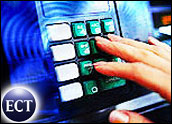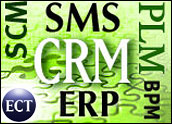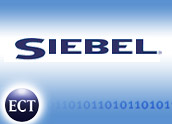
First Chicago (now Bank One) initiated the trend of charging for face time with a teller in order to encourage the more cost-efficient use of ATMs. Competitors hastily followed suit.
In December 2002, however, the bank dropped this controversial practice, concerned that self-service banking channels would weaken their relationships with retail banking clients and reduce their opportunities for cross-selling.
But it seems those concerns were unfounded.
Different Channels
Research from GartnerG2 reveals that self-service customers talk to bank staff for high-value banking issues more than those who don’t use ATMs, online banking, online bill pay and interactive voice response (IVR).
Analysts have long known that consumers differentiate their purchase activity across different retail types — visiting superstores less frequently than drug stores, for instance, thus creating an opportunity for the drug store to compete with the superstore in some categories, such as simple home furnishings.
In a similar way, consumers differentiate how they use banking channels.
“We did fairly detailed survey work around American consumers and their routine functions and value-added functions,” David Schehr, author of the GartnerG2 study, told CRM Buyer. Whereas using an ATM or online banking — for determining whether a check has cleared, getting an account balance or withdrawing cash — doesn’t a relationship make, neither does it a relationship break.
Savvy Customers
Instead, customers use automatic banking service for some simple transactions, then talk to representatives for more complex ones.
“Consumers look to talk to a person [concerning] retirement planning, investments and trusts,” Schehr continued. ATMs and IVR obviously can’t service those needs, and neither can the Web. These automatic services “don’t offer ‘how do I plan better for my kids’ education’ interaction.”
Consumers don’t consider ATM or Web banking a replacement for teller visits or sit-downs with branch banking representatives. In fact, they view the former channels as time- and cost-efficient, too. Their time is money, just as the bank’s is.
With home equity lines of credit and other products for which banks offer online applications, many consumers prefer to visit their branches, said Tom Kelly, Bank One spokesperson. But while they’re in the branch, Bank One branch staff members demonstrate how they can electronically move funds from that credit line into their checking accounts.
Banking on Options
Bank One has found that what makes for the strongest customer relationships is a variety of options. “We try to write a whole menu and let them pick parts of the menu they want,” Kelly said.
When customers enter a bank branch, they come ready to start a relationship, rarely to conduct research. Research often happens before the branch visit, usually online.
U.S. Bank works to make sure that once its customers have opened new accounts, they feel comfortable making transactions in many channels. Steve Dale, spokesperson for the bank, told CRM Buyer that segments of its customer base have different comfort levels in banking interactions. Use of self-service channels is less about the particular banking functions the consumer is trying to complete and more about what they are comfortable with.
Building a Common Experience
In fact, U.S. Bank has enjoyed longer –not shorter — relationships with its customers since the implementation of ATMs, online banking and bill pay. “Internet banking has been very, very successful as far as customer acceptance,” he said.
U.S. Bank seeks to offer the same experience across channels while also delivering the most relevant sales offers through each. In other words, the experience has to be common, but also customized for each channel.
“Self-service channels allow us to target our communications better as well as use our system almost as a concierge service,” Dale said.
“We look for other needs of our customers. We can either put them in touch with the right person to meet with and talk to or direct them to information online.” As a result of this customization, U.S. Bank has experienced no drastic reduction in cross-sales but instead a smarter, more successful way of securing them.























































